Cypress Upper White oak Bayou Restoration E133
Image during Harvey August 2017
Copyrighted Images Lee Rodriguez Photography
Beginning of Channel E 133 July 2016 (single drain)
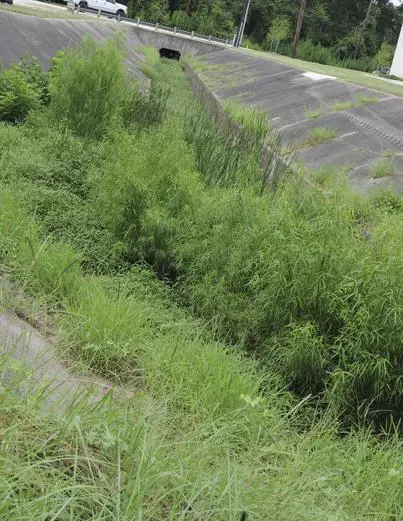
Beginning of Channel E 133 July 2016
(double drains not visible)
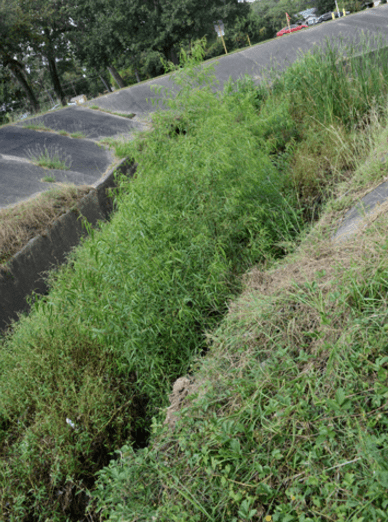
Community Environmental Activist Kathi Valenti For the Restoration of Channel E133 ( 2016-2017)
We did not know each other, and we live in different subdivisions. But we both knew something must be done to help prevent flooding. As we gathered information, we tried to figure out what would improve the area. We want this website to educate and inform our neighbors. In every neighborhood we visited, people said they tried to bring change, but they failed. No one devoted the time and energy to thoroughly examine the Upper Cypress White Oak Bayou watershed, photograph the problems, write about it, and make the county officials aware of the specifics. This story proves that two people can make a difference.
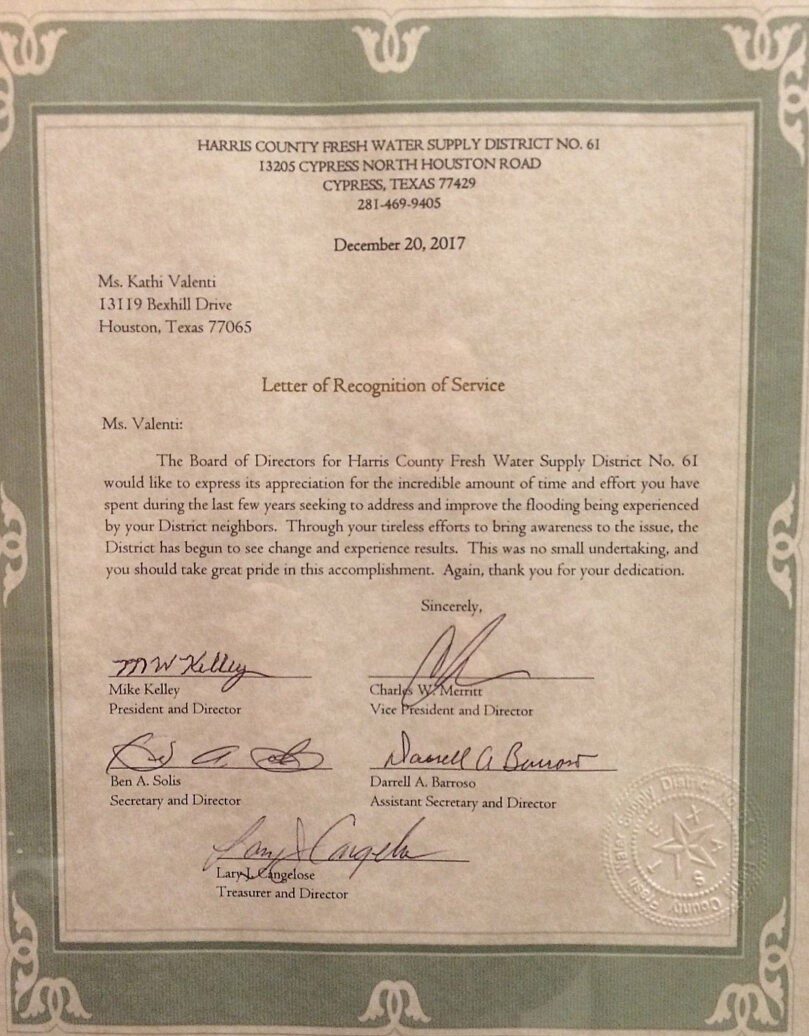
As we drove in every direction, neighbors loaded dumpsters with carpet, furniture, sheetrock and sentimental possessions. Many were too exasperated, emotionally and physically drained to share their stories. Thankfully, some people seemed temporarily relieved to express their heartbreaking flood stories. Rapidly rising water forced one man to seek refuge in his third-story attic. Haunted by those stories and our own horrific experiences, we were compelled to seek substantial solutions.
*E-133 refers to the channel south of Cypress- North -Houston (next to Harris County Fresh Water Supply 61 Bldg.).
The channel leads to White Oak Bayou.
The water from the following areas drain into E133:
Tower Oaks Meadows
Bonaire
Meisterwood
Barwood Bend
Ravensway (front southern half)
Ravensway Lake
Cypress Corner (businesses, church, and houses)
Wortham Estates
Village at Cypress
Cypress Stone Village
Evidence of the Neglected Bayou
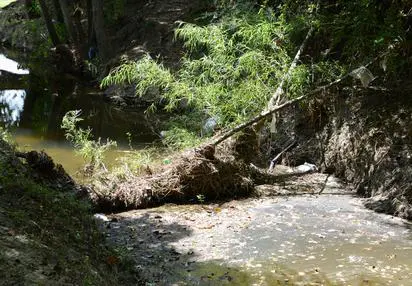
Dead tree blocking the water flow in the bayou
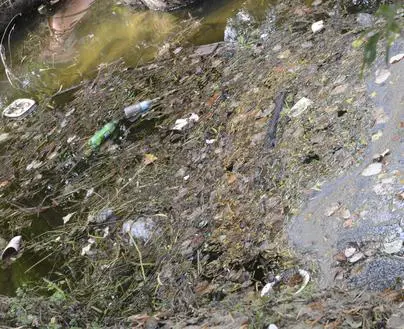
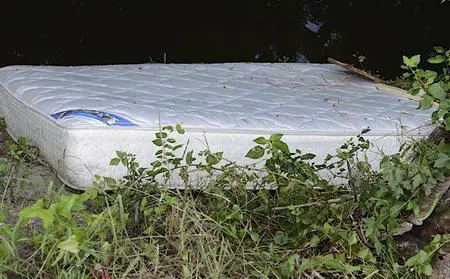
The bayou needs our protection from people dumping trash
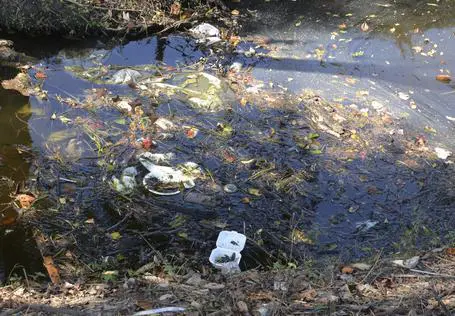
We attended county and community meetings that did not provide flooding solutions.
Identifying the responsible county agency for each and every unmaintained culvert, ditch, bayou, channel, and the underground pipes was challenging due to the unusual drainage configurations
(early 60's Cypress drainage systems merged with new infrastructure as developments engulfed the original area).
The Harris County Flood Control District (HCFCD) maintains and cleans the bayous and channels.
For our area, Precinct 3 maintains and cleans the underground drains and pipes, ditches, and culverts.
Numerous phone calls, personal meetings, and several e-mails produced no action.
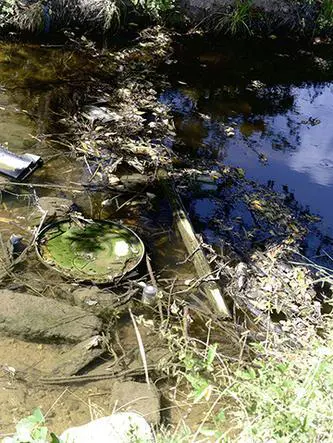

Please be aware that trash ends up in Galveston Bay. Trash contributes to flooding. Be part of the solution.

Notice the height of the trash in the trees
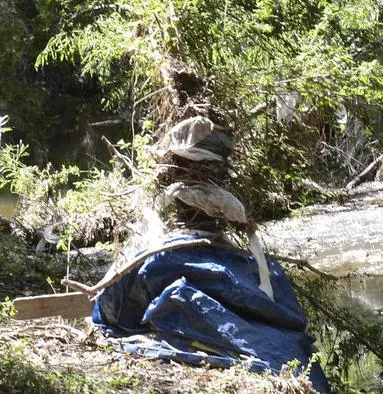
A tarp and plastic tangled in the tree
Relentlessly determined to advocate for bayou maintenance and drainage infrastructure restoration,
we pleaded our case to the Harris County Commissioners' Court, the governing body for Harris County.
Judge Ed Emmett and four appointed precinct commissioners preside over the court, hear their constituents' concerns, and decide how to handle each issue. After our plea to the court, we were sent to a meeting room with Harris County Engineer, Mr. John Blount, and Executive Director of Harris County Flood Control, Russ Poppe. We had an extensive discussion concerning basic drainage maintenance,
detention and retention pond requirements for new developments, and private-well drilling at the floodplain.
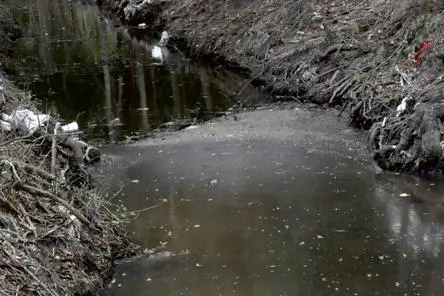
Trash and debris blocking water flow- stagnant water
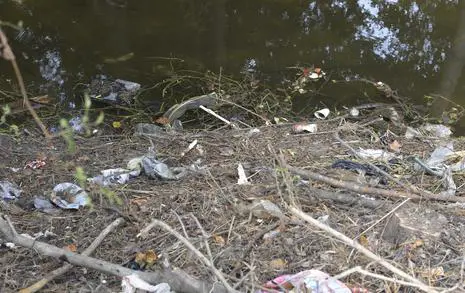
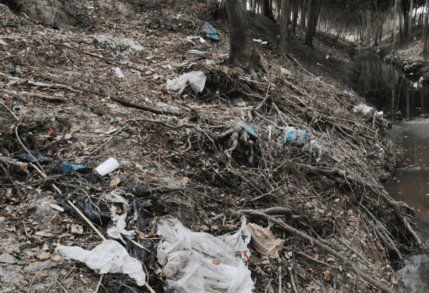
Trash on the bank and debris in the water
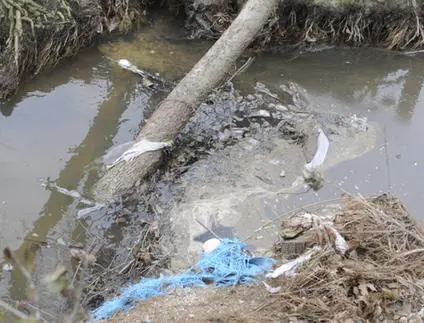
Several trustworthy sources stated that Channel E133 and the underground drains were neglected for over 30 years.
Mr. Blount and Mr. Poppe confidently assured us that HCFCD collected summer silt samples from Channels E133 and K163, and
Harris County Engineering would soon survey the surrounding subdivisions. Then they would decide whether action would be taken.
Bayou Maintenance Overdue

The waterway filled with dirt and vegetation
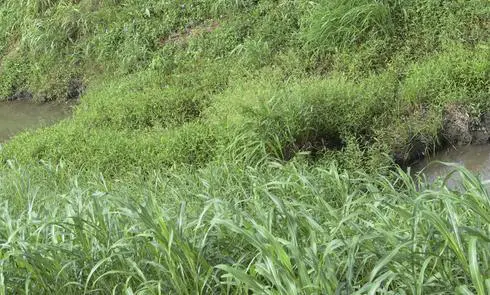
Island impeding water flow
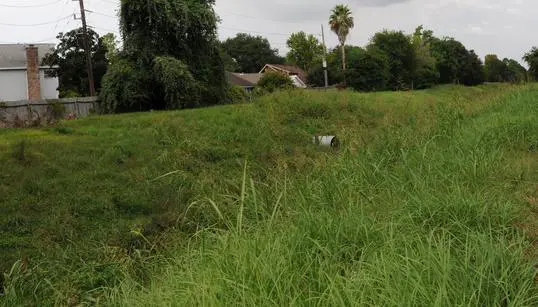
Quarterly maintenance overdue

Double drains partially visible
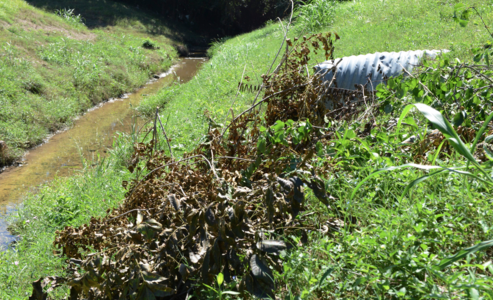
The grass was over four feet tall in many areas
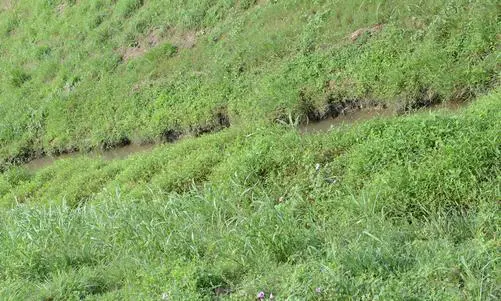
The narrow bayou
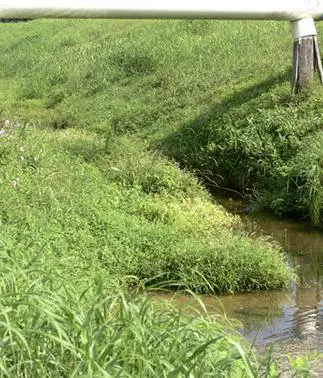
Island blocking water flow in the bayou
For the next several weeks, we battled insects, snakes, thick brush, major debris, and the stench of stagnant water to
photograph the deplorable conditions of the bayou.
We asked the neighbors to provide details (the direction of the water flow, the variance of the water depth from street to street, etc.) about how the floodwaters flowed through their neighborhoods.
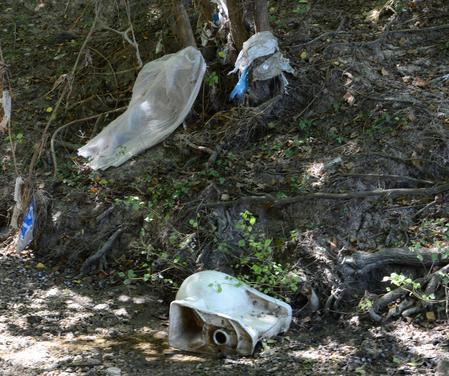
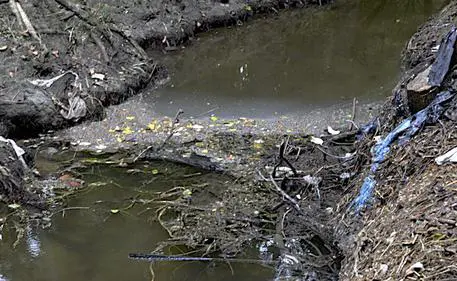
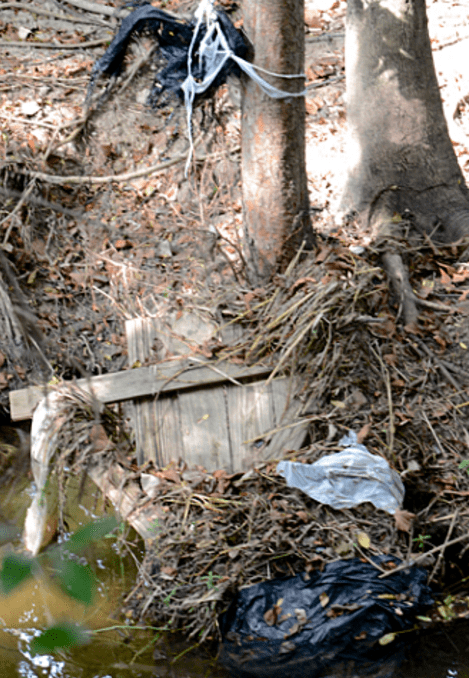
A variety of debris ends up in the bayou
We read every article about flooding in the Houston Chronicle, the Community Impact, and other pertinent publications.
We watched 2016 drone footage, viewed underground pipe maps, and examined years of rain gauge totals from HCFCD. We observed, photographed, and measured the water in the ditches and the channel after heavy rainfall.
We spoke to several experienced engineers and asked them many questions. We loaded flood images and neighbors' letters on flash drives along with a government form that stated the issues that concerned us and what we wanted to be done. We sent all the information to U.S. Congressman John Culberson and Michael McCaul. We called to confirm Congressman McCaul received the data, and the secretary said the package went to the social security office.
Unbelievable!
After four months, Congressman McCaul's office told us flooding is a local government responsibility.
However, we gained a valuable advocate, Mary Schneider, at Congressman Culberson's office.
The HCFCD cut trees and thick brush on the bank despite the fact that the tree roots slowed erosion. After one rain, the mulch added to the debris in the bayou.

Before trees and brush cut and mulched
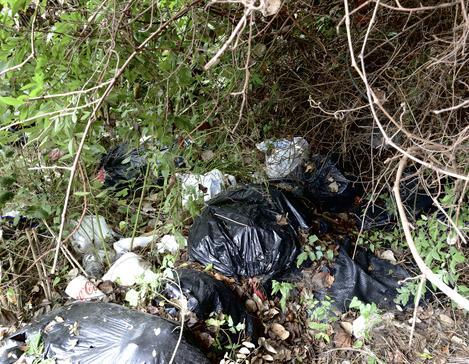
Ten trash bags dumped in the brush
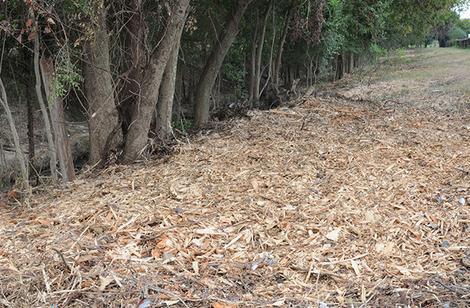
After trees and brush cut and mulched
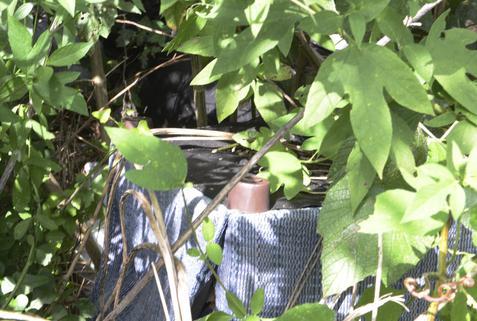
More trash hidden in the brush
We continued to communicate with county workers about who was responsible for removing the trash.
In an unproductive meeting with officials and a couple neighbors, we were told that the trash would not be picked up.
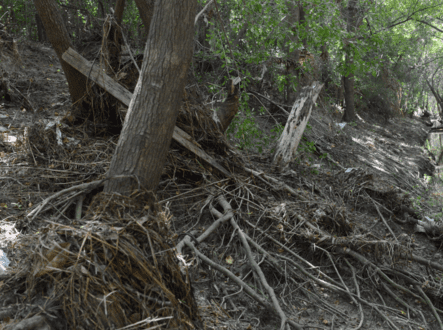
Tree roots slow erosion
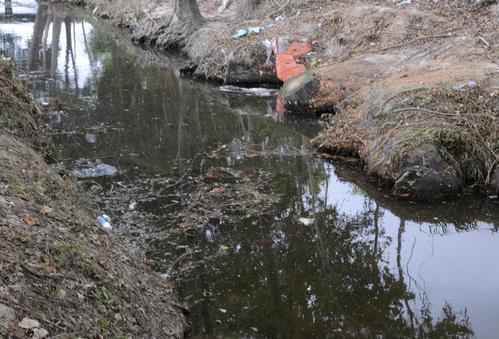
The stump is all that's left of the large tree in front of the orange barrel
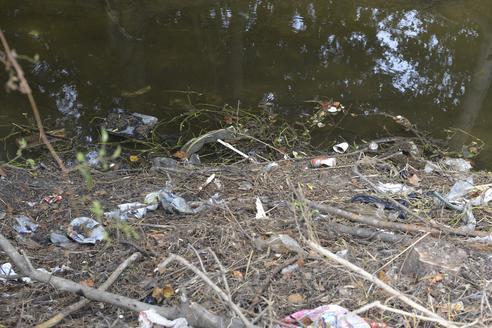
Litter finds a home at the bayou

The green stumps show where trees were chopped

Mulch and trash in the bayou after one week on the bank
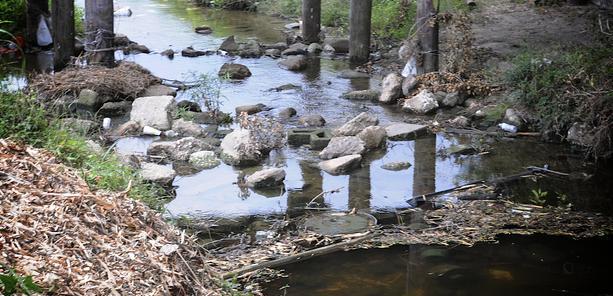
The first rain after the county mulched the trees led to mulch in the bayou at Fallbrook
According to Ms. Susan Chadwick, Executive Director of Save Buffalo Bayou, studies have shown that trees and bank vegetation clean the storm water more effectively than expensive sewer treatment plants.
And trees are powerful storm water detention devices. If we stop the banks from eroding sediment,
we reduce the bacteria and pollution in the water.
No Room for Water
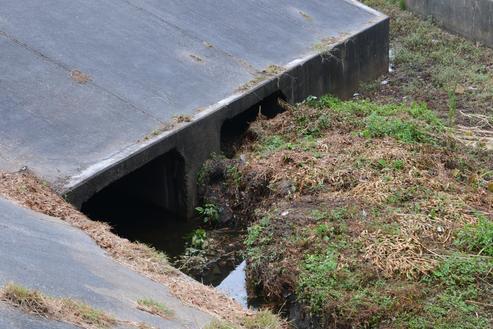
WOW! You can almost see both drains (October 2016)
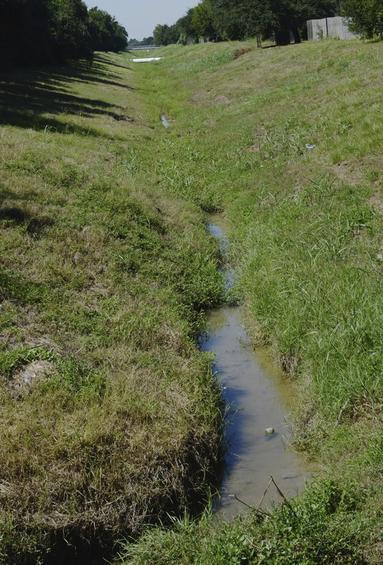
An almost invisible drainage channel
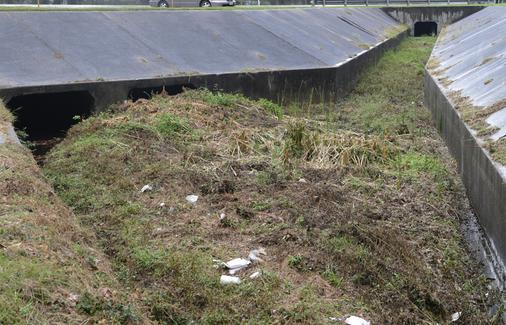
Solid dirt islands in the channel
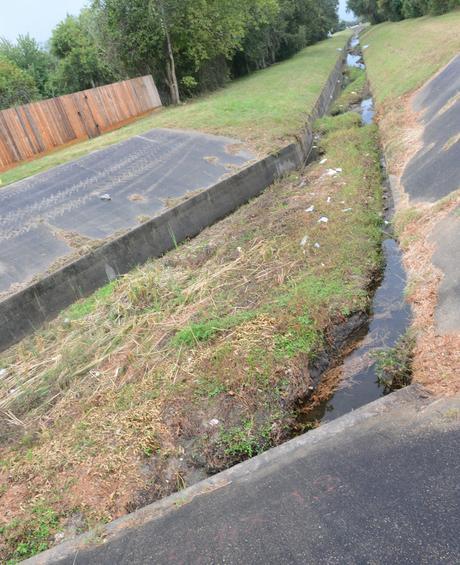
Islands in the channel and bayou

Filled with decades of dirt and debris, we were compelled to spotlight the neglect of the bayou. It could no longer be ignored. The floodwaters could wreak havoc in our community while we waited for the county to clean the bayou.
Such an obvious common-sense solution that could prevent so much misery, but we needed to convince them to do it.
Back To Commissioners' Court
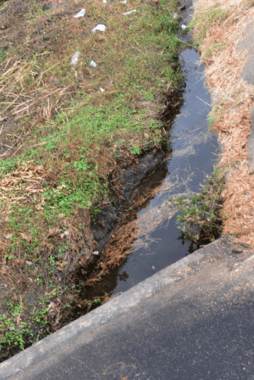
Drain here
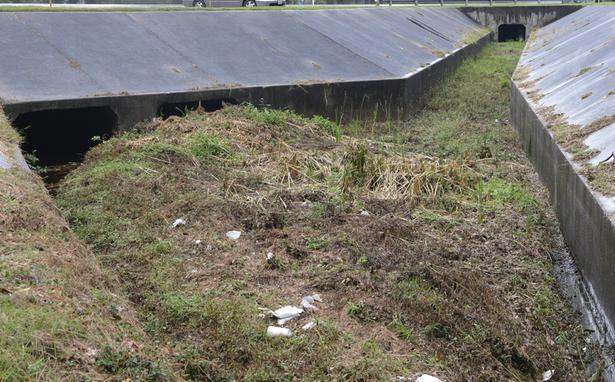
After many unsatisfactory responses, we compiled our data, printed 60 photographs, and headed back to Commissioners' Court. One image was an old truck bed under the discharge from the water treatment plant. Other images included full trash bags, wood, broken drainage pipes, doors, a bed mattress, a toilet, etc. We handed the images to the court to show the neglect bayou. We left feeling unheard and defeated. We were encouraged by a phone message from pollution control about the truck bed. Pollution control removed the truck bed the following day.

Bayou Restoration Begins
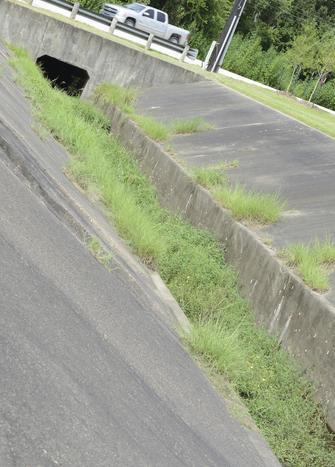
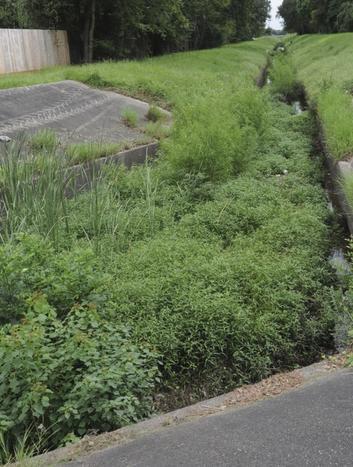
We innocently walked by the mounds of dark, odiferous sludge (not knowing that it was emitting VOCs) which quickly gave us both a headache. Volatile Organic Compounds are compounds that easily become vapors or gasses. Some common VOCs include TCE (degreasers, spray lubricants) and benzene (industrial solvent). We took soil and water samples to prove toxins were in the water and soil. We filled the sanitary containers to the top so that the VOCs could not escape, and we stored them at the correct temperature. When we returned to our homes, we discovered that we suffered from the same symptoms of nausea and weakness. After staying away from the bayou, we slowly recuperated.

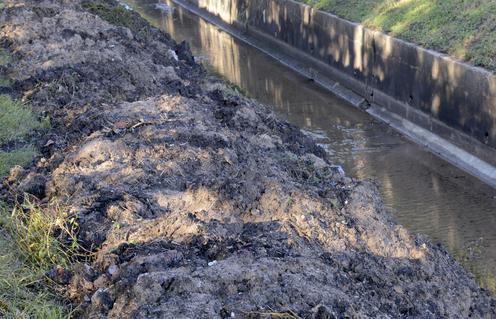
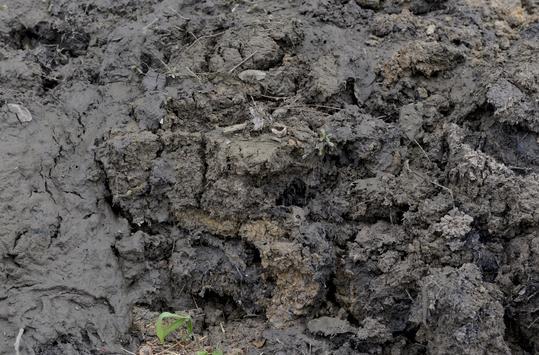
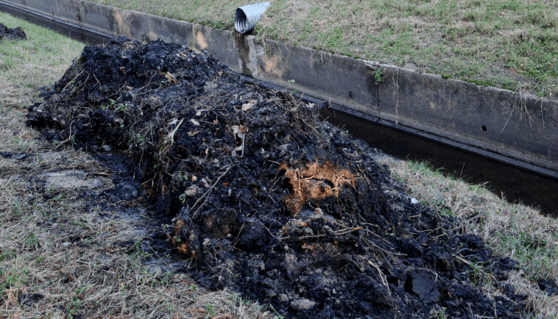
We were told the noxious sludge piles littered with plastic debris would be hauled away, and some sludge was taken to a class 2 type landfill (the county is only required to test for SVOCs - not VOCs).
Shockingly, some of the sludge was spread out and flattened on the bank, which defeated the purpose.
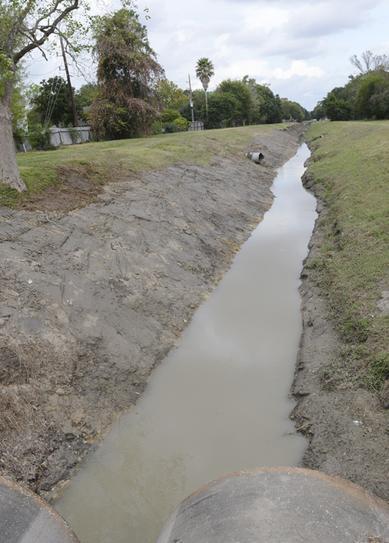
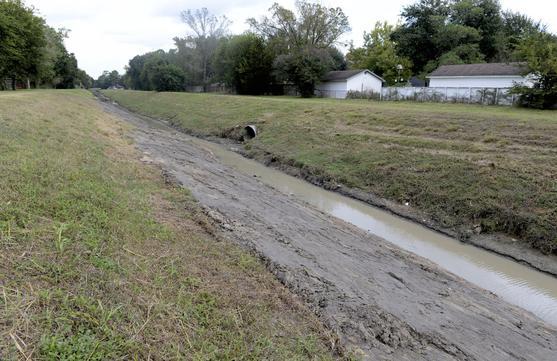
November 2016 flattened bayou dirt on the bank
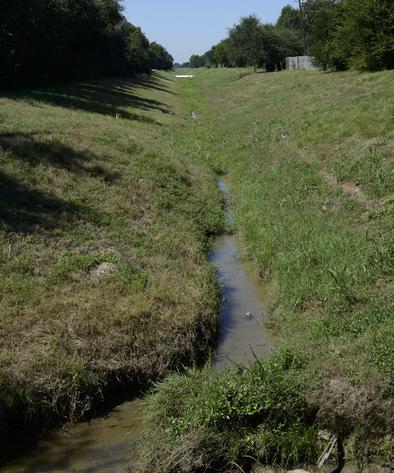
October 2016 Bayou in critical condition
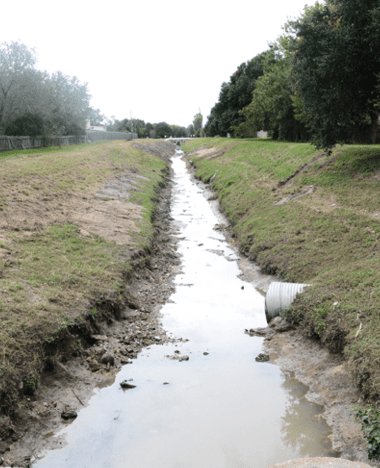
November 2016 (after dredging) same area as image to left
These images were taken in the same general area of the channel. Bayou capacity is crucial.
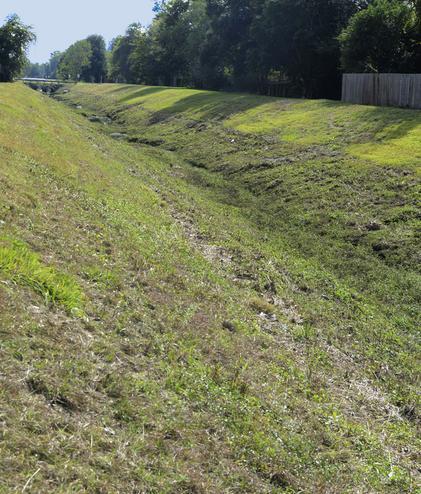
October 2016
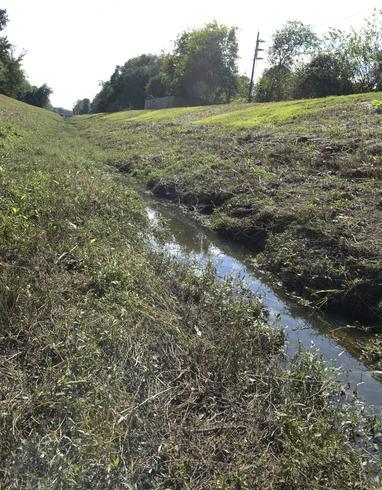
November after dredging the bayou 2016
Two days before Thanksgiving, Kathi noticed a saturated area on the bayou bank and photographed the resulting bank erosion.
Cathy reported the leak to Harris County Pollution Control (after being transferred to several agencies).
Surprisingly, the county worker showed up the day after Thanksgiving to investigate the leak.
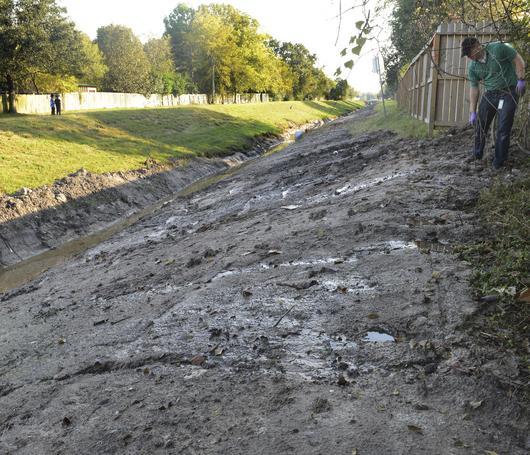
Chris from pollution control checking the leak
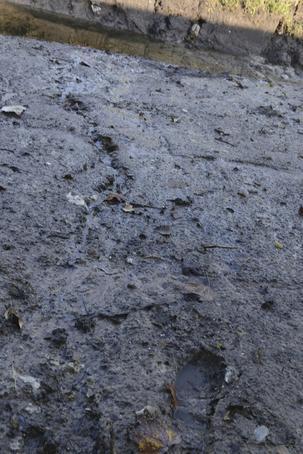
Chris's footprint in the mud from the leak
During the month of November, Kathi diligently monitored and photographed the workers clearing the bayou. County officials explained to us how each procedure would be done. But the workers were not always informed about the proper protocol. Frustrated by the lack of oversight and the thought of the sludge sitting on the bank forever, we continued to voice our complaints.
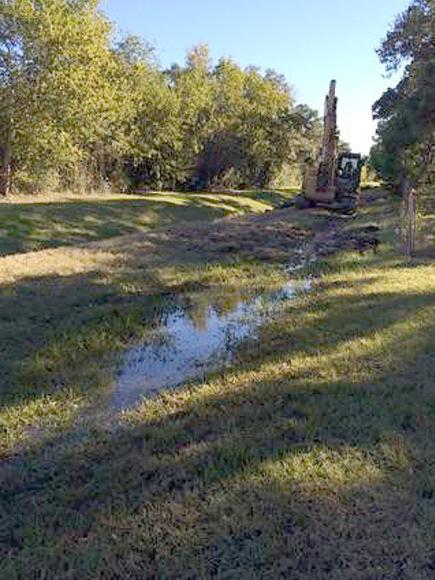
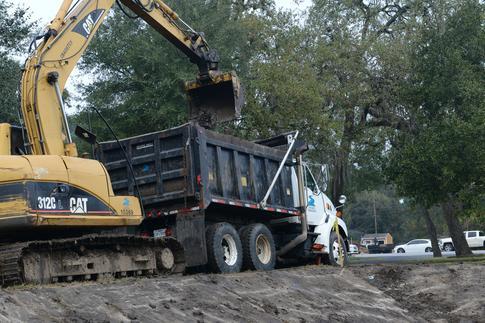
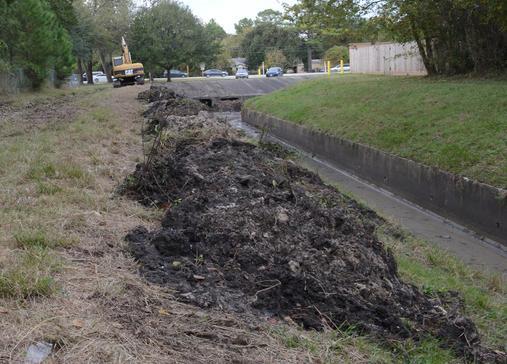
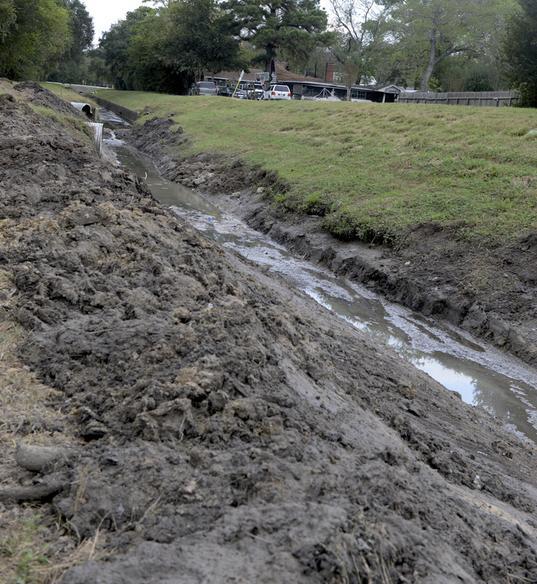


The backhoe scooped the dirt from the front of the channel
(at Cypress- North- Houston) and dumped it on the bank. The dirt which blocked the drains for so many
years was flattened onto the bank. The county officials told us they would haul it away.
So much dirt left on the bank lessened the bayou's capacity to hold water.
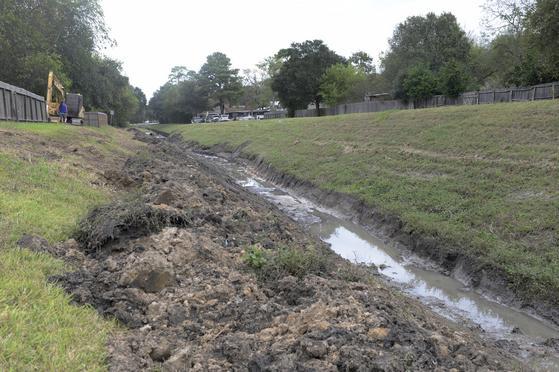
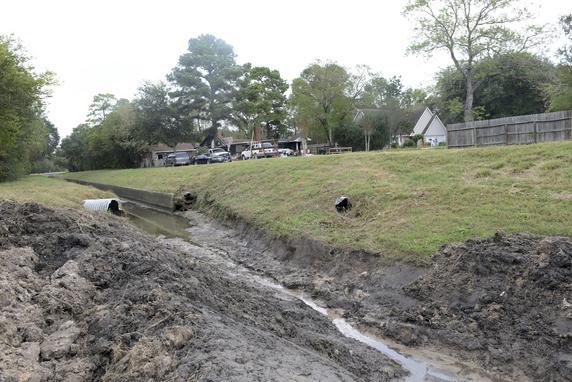
Despite the imperfect implementation of the bayou dredging, the bayou's capacity to hold and drain water has improved due to our bulldog tenaciousness.
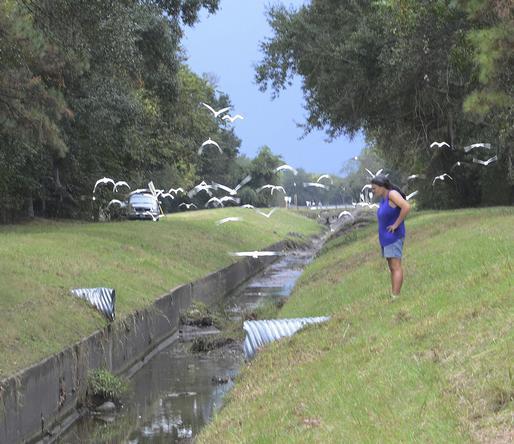
After the channel dredging, we witnessed our first wildlife sighting there
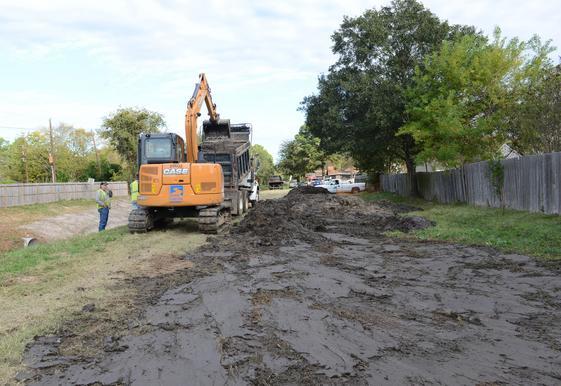
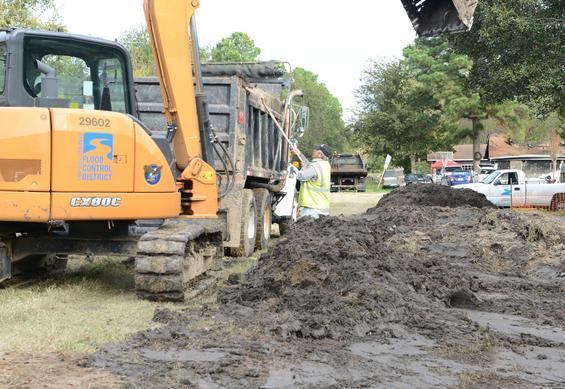
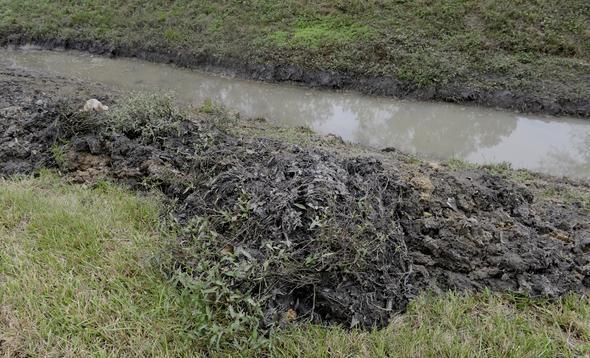
Conquering The Drains
Workers were in front of the drain while the backhoe worker scooped a load of drain dirt. What came next was completely unexpected. A visible chemical plume emanated from the toxins, which were trapped in the dirt inside the drain, and immediately sickened everyone in the area.
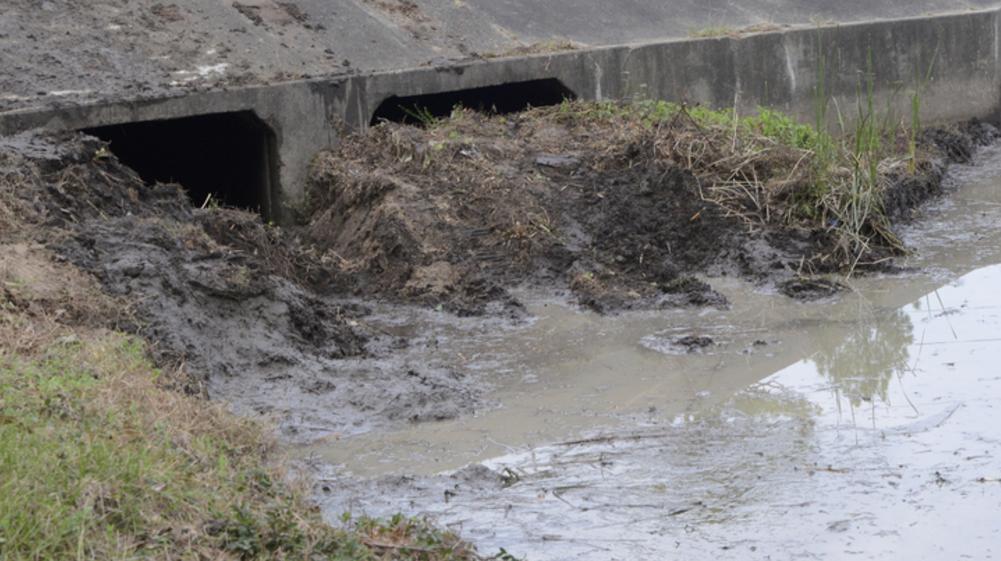
It was time for Precinct 3 to tackle the daunting clogged drains that have impeded water drainage for decades.

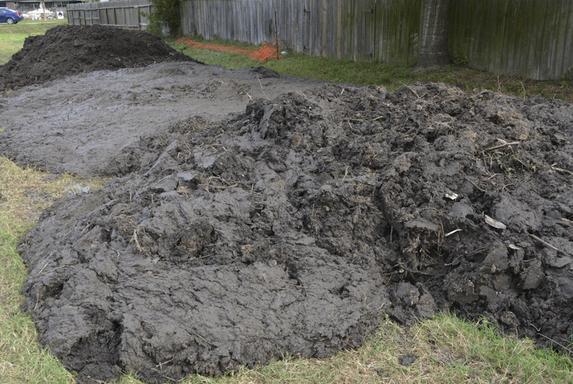
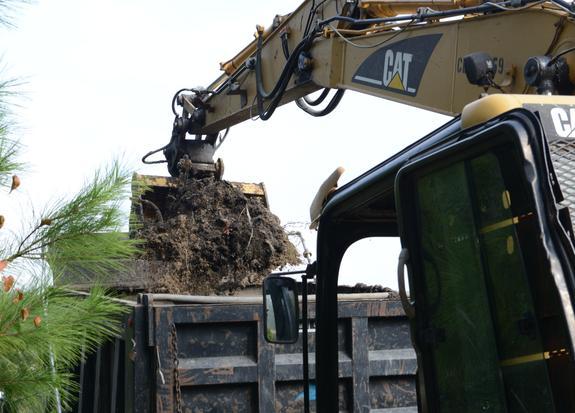
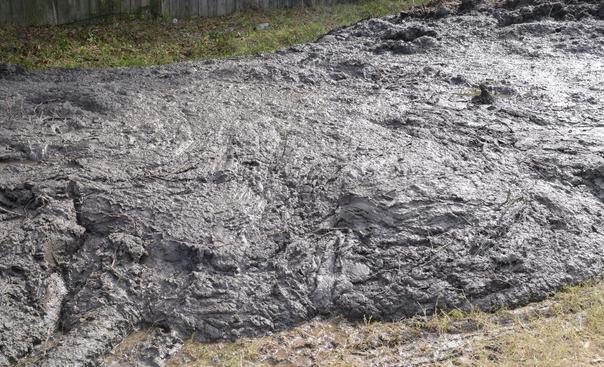
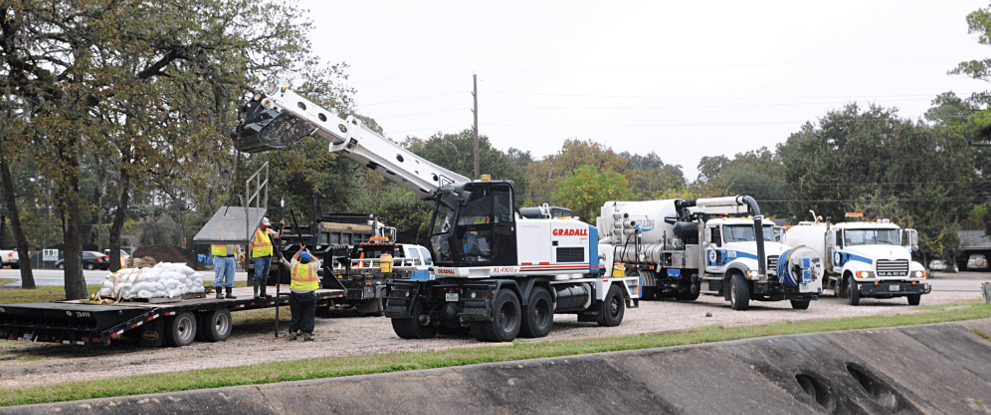
Since the dirt hardened over many years, it would require several tanker trucks with pressurized water to begin to dislodge it. In December, many different crews repeated this process to saturate and soften the contents inside the drain. Precinct 3 felt the drain would allow for adequate water flow (see image below).
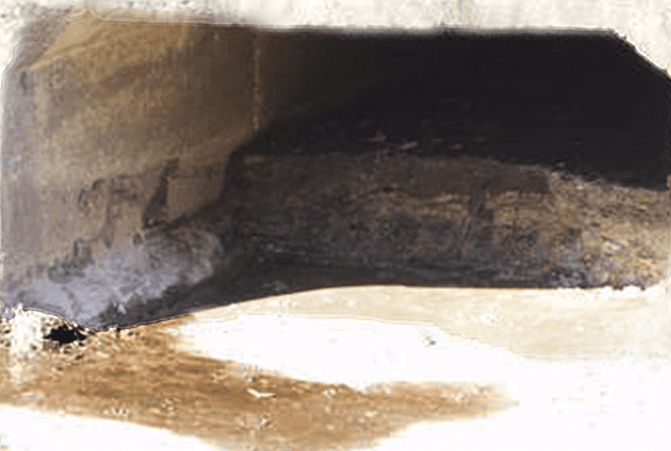
After many pressurized washings, the "Grand Canyon" rock remained
Water Flow Still Impeded
Precinct 3 agrees to continue the drain cleaning.
Hooray!
It was time for Precinct 3 to tackle the daunting clogged drains that have impeded water drainage for decades.

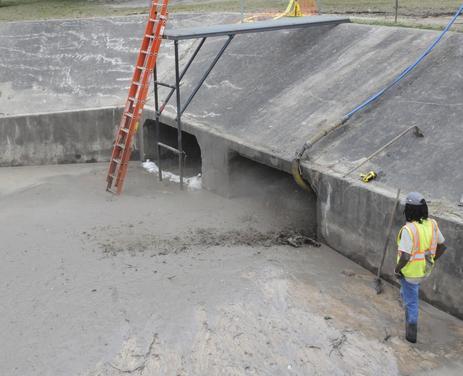
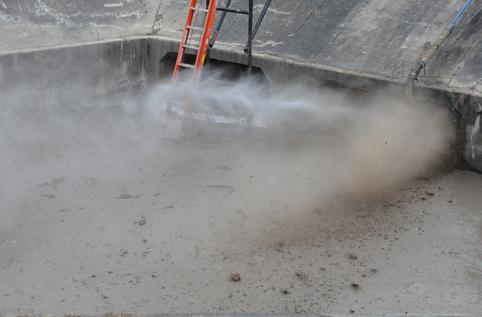
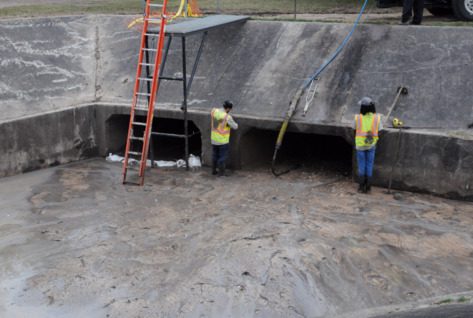
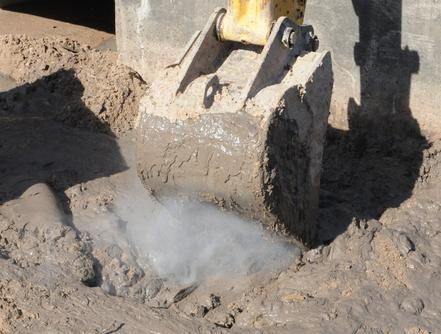
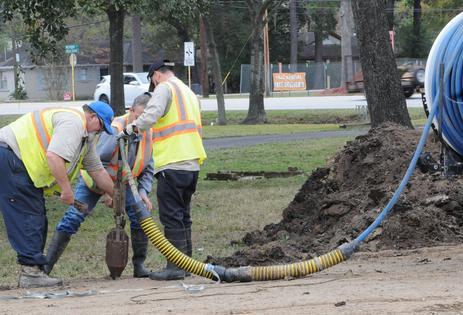

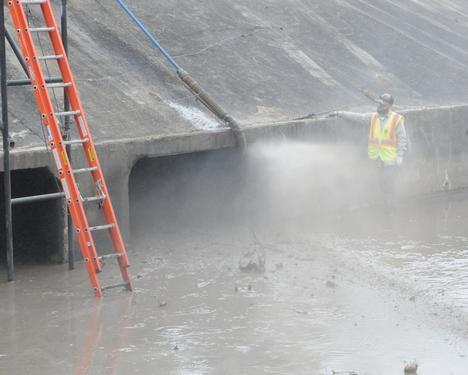
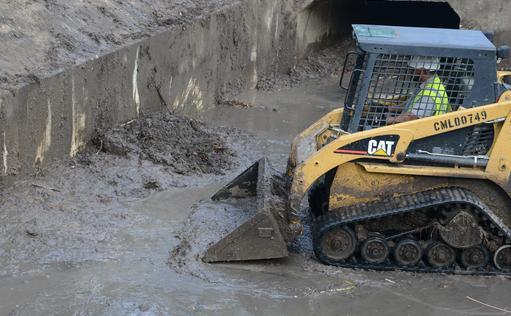
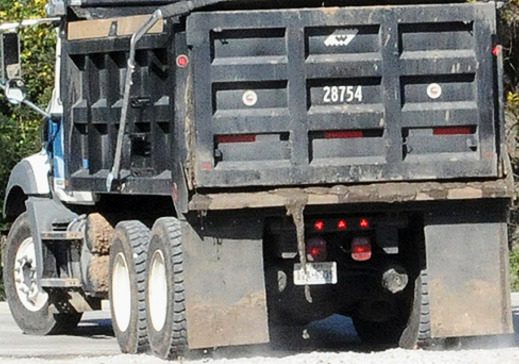
Since the double drains and the single drain (off to the right) are responsible for water drainage for over $40 million worth of property value (according to Harris County Appraisal District), it is essential for them to be clean and clear. Precinct 3 wanted to see if the rain would finish cleaning the drains. But looking at the dirt and debris that remained after the pressurized water, it was apparent the dirt needed to be forcibly removed and hauled away. If hard rain flushed the dirt and debris out, it would fill the channel and bayou. More e-mails, phone calls, and pictures convinced them to finish cleaning those drains.
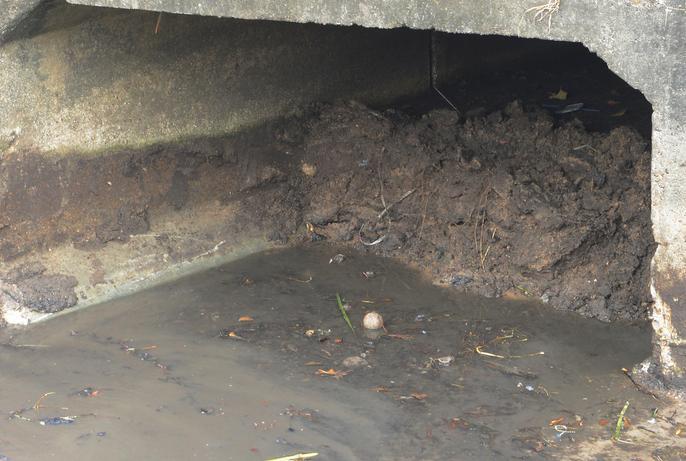
Dirt finally softening
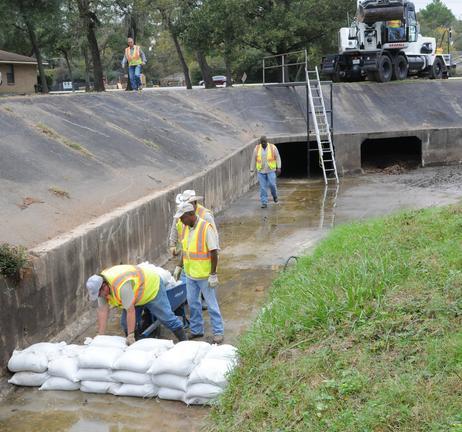
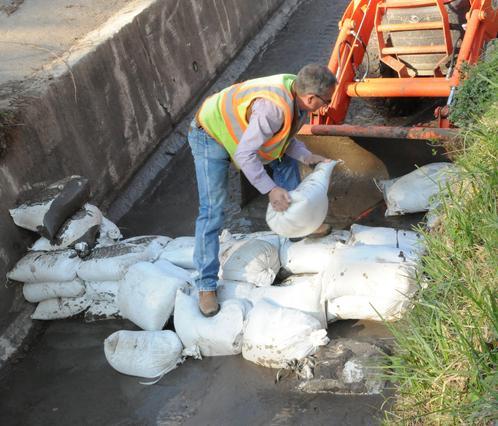
The crew stacks sandbags to keep the toxins from flowing downstream
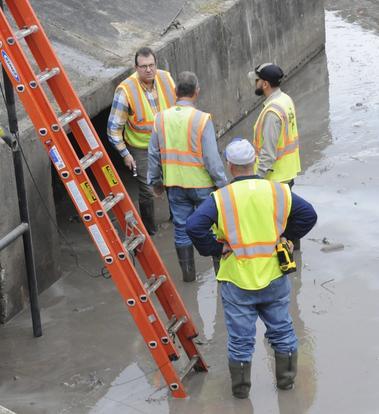
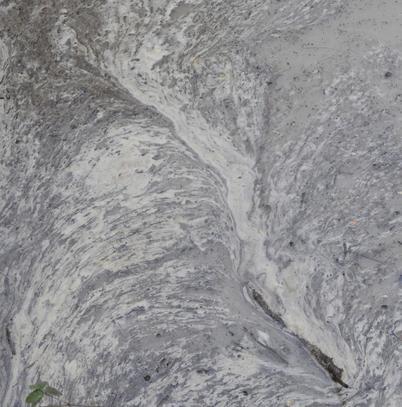
Chemicals swirling on the surface
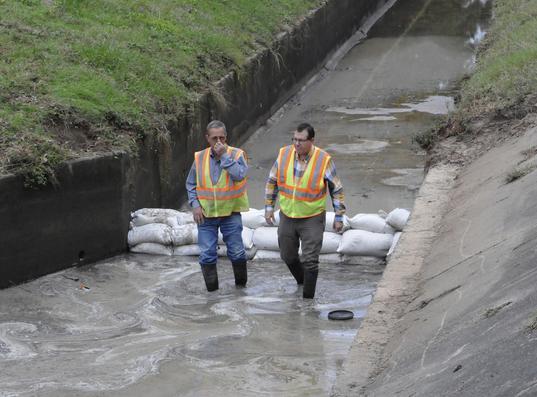
The stench is overwhelming
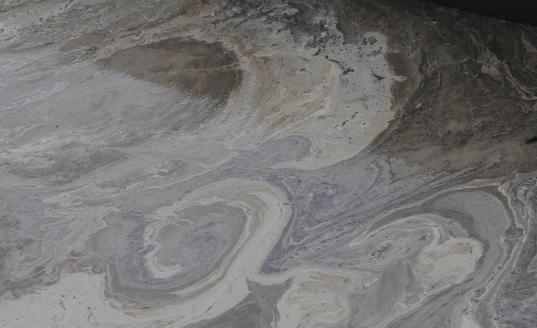
Toxins washed out from drain

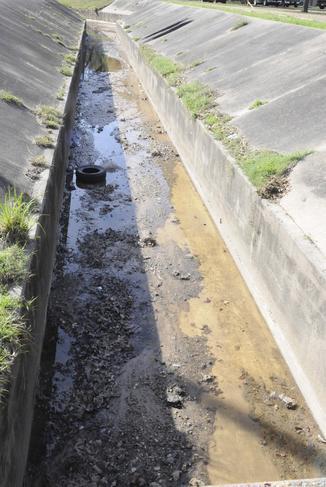
Tire that washed out from single drain
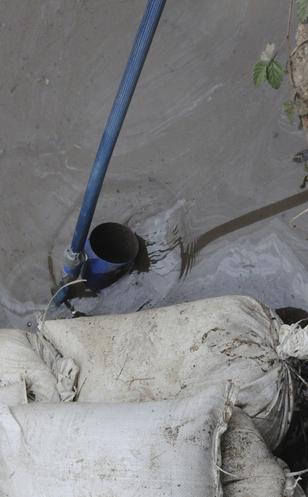
Collecting a liquid sample
Because the double drains' shape prevented the county vehicles from entering them, Precinct 3 sent a skilled, experienced skid-steer loader and Kubota small front-end loader operator to attack the stubborn dirt at the double drain entrance. More tanker trucks of water and more crews repeatedly flushed the most clogged drain.
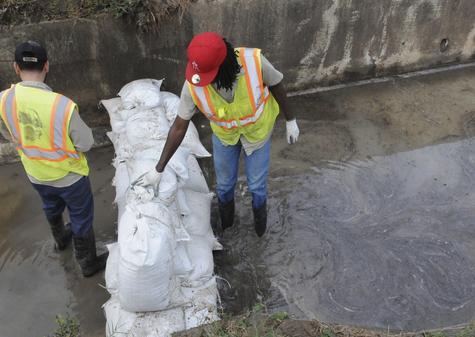
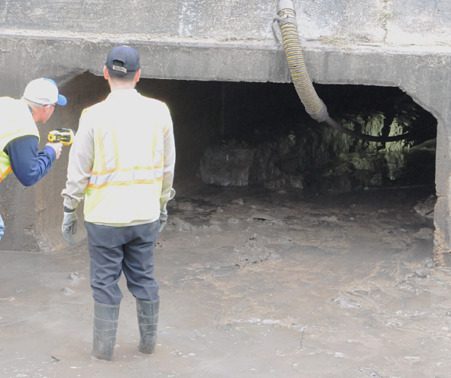
After three weeks, Precinct 3 still trying to remove the "rock" in the drain
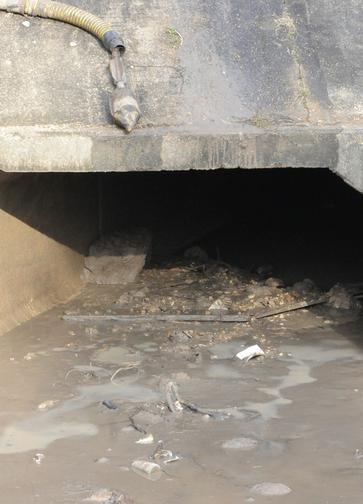

Inside the drain after weeks of pressurized water
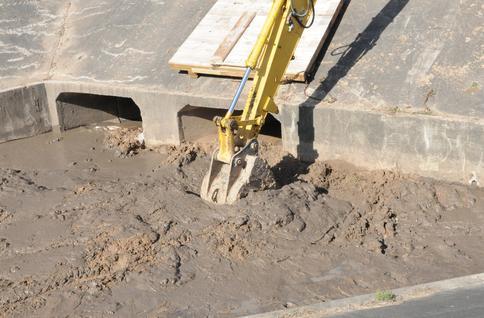
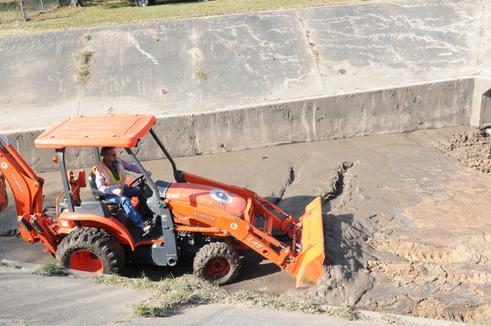
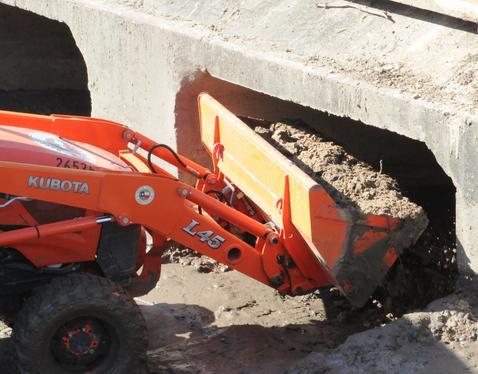
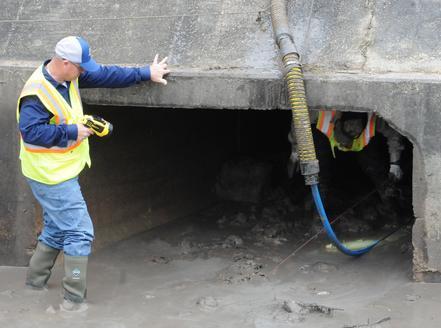
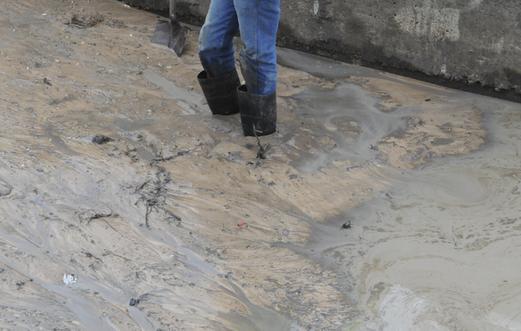
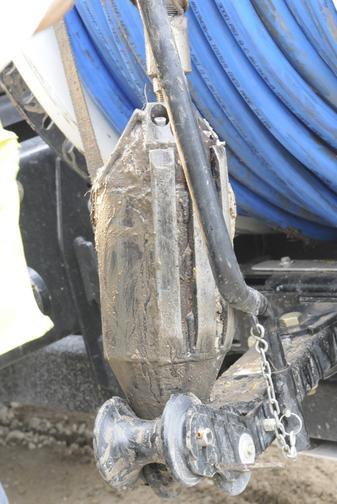
Spray jet nozzle
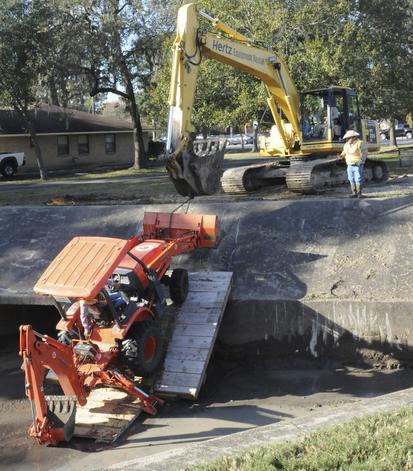
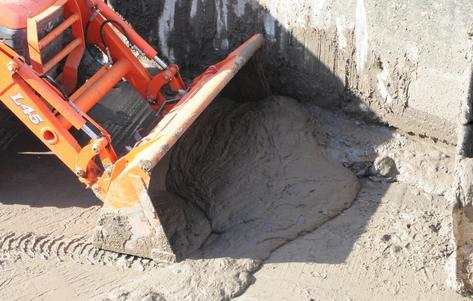
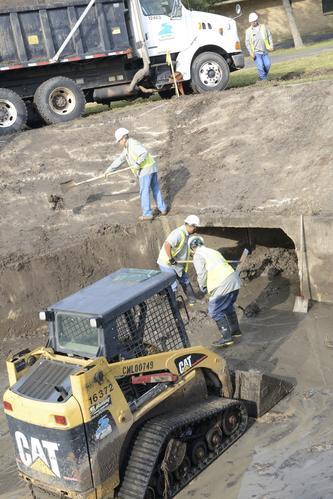
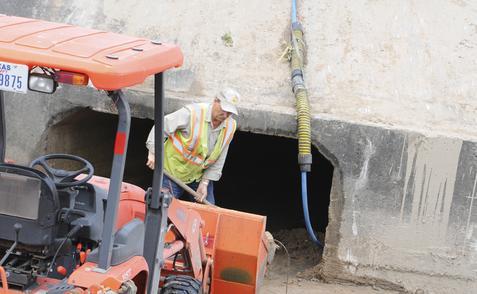
Precinct 3 Commissioner Steve Radack instructed the crew to finish cleaning the drains. They used shovels to remove the remaining debris and dirt. This will drastically improve drainage for hundreds of homes, many businesses, and churches.
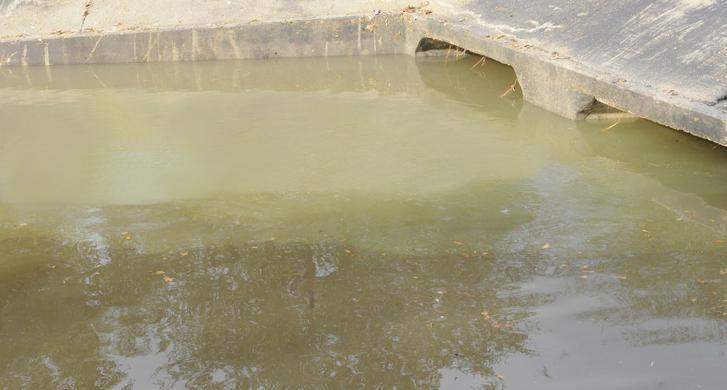
Fortunately, the single drain is about 6 ft. high so the equipment could go inside the drain.
In total, about 12 dump trucks loads of dirt were removed from two of the drains.
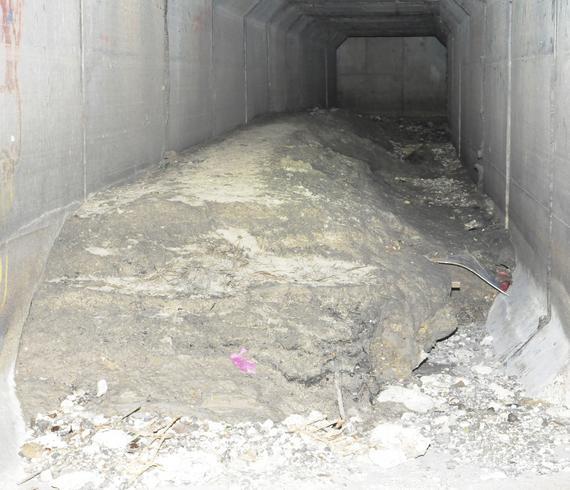
Inside the single drain before the final cleaning
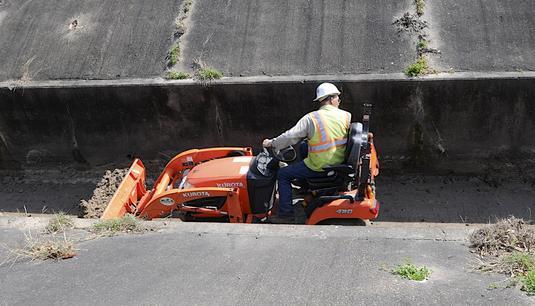
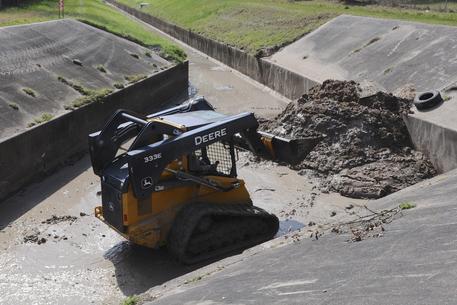
The crew took dirt out of the single drain and moved it so backhoe could remove it from the channel
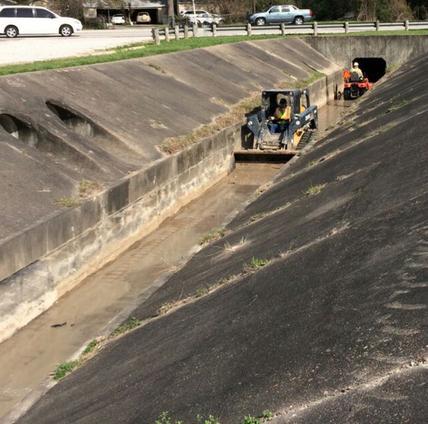
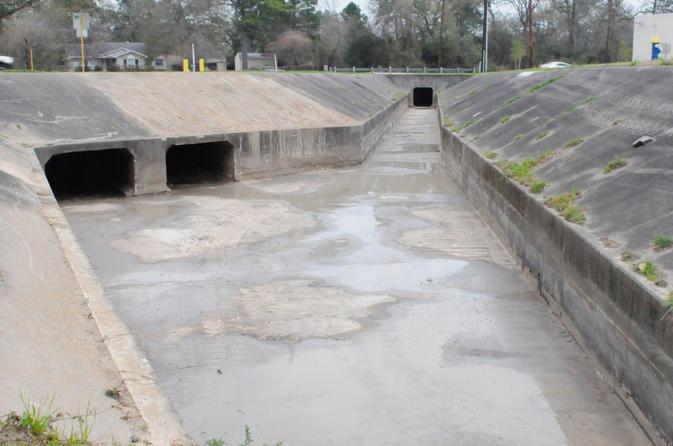
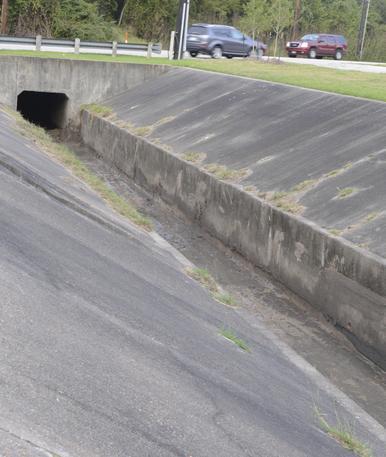
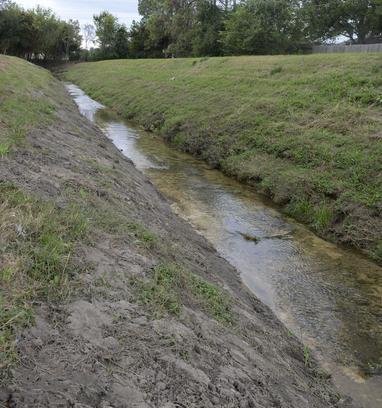
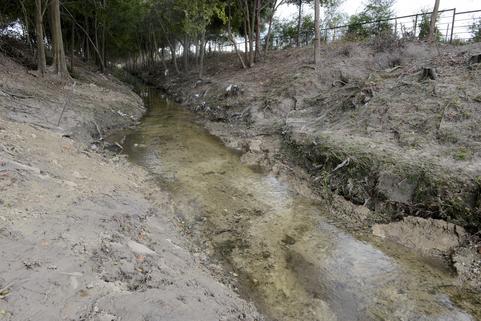
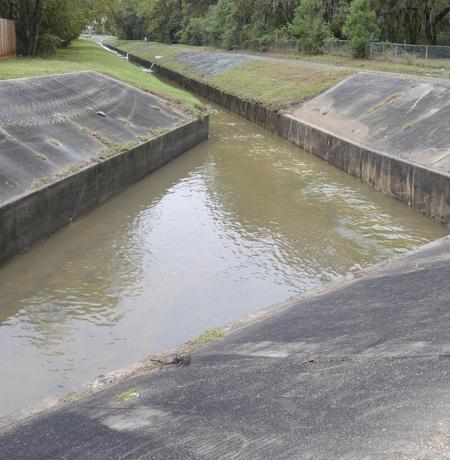

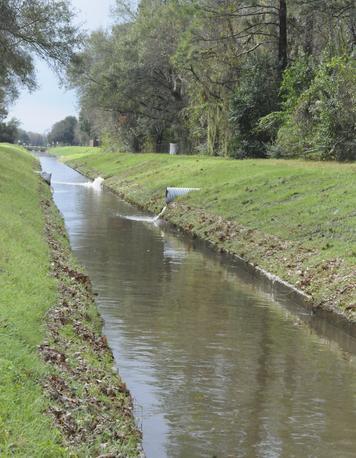
HCFCD cleaned Channel E133, from Cypress-North-Houston south to White Oak Bayou. They dredged about 50 truckloads of dirt from the bayou, channel, and drains and underground pipes. This is more important as development so close to the floodplain has negatively affected the surrounding areas. According to Samuel Brody, an urban planning professor at Texas A&M University, every square meter of concrete in Houston, on average, translates into about $4,000 of extra flood damage.
Harris County officials are listening to their constituents, but more must be done.
In the fiscal year, 2016-17, public pressure influenced officials to force developers to increase detention pond requirements and improve drainage. But according to the Community Impact Magazine from March 2017, HCFCD did not increase requirements in the White Oak Bayou watershed. The county purchased land for detention ponds and bought 63 homes that repeatedly flooded. However, we saw no information on any land purchases for detention ponds in the White Oak Bayou watershed. People should secure debris, avoid blowing lawn clippings into the drains and throw their trash away. The extent of plastic bottles, aluminum cans, construction materials, styrofoam containers, fence pickets, plastic bags, etc. that we saw in the water is staggering. We are moving our focus to Channel K163 in the Cypress Creek watershed. Onward ho!
Clean Drains
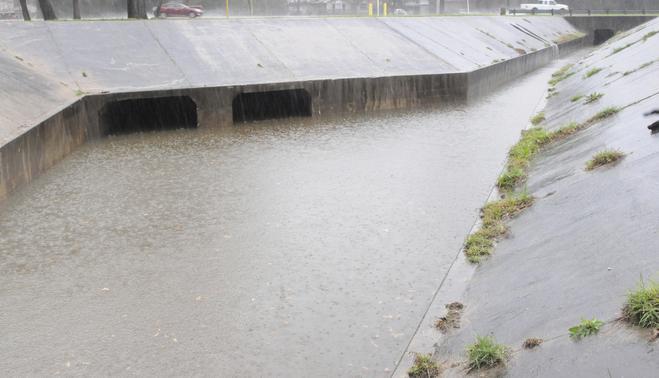
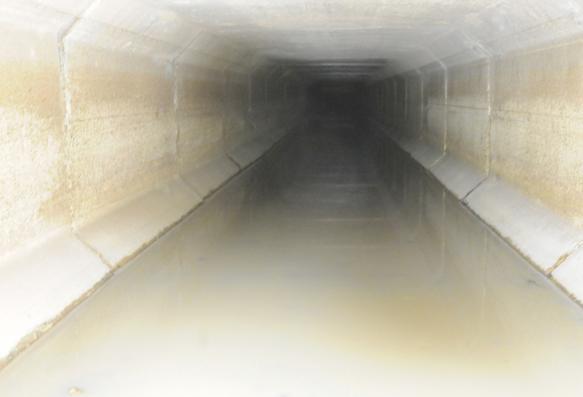
April 1 2017 Inside the far left side of the double drain
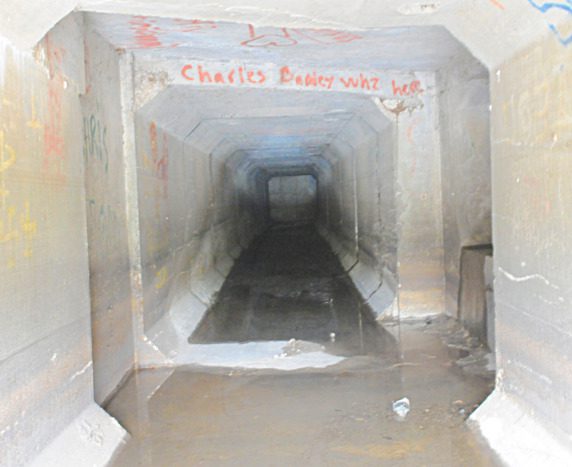
April 1 2017 Inside the single drain
April 1 2017 Inside the channel
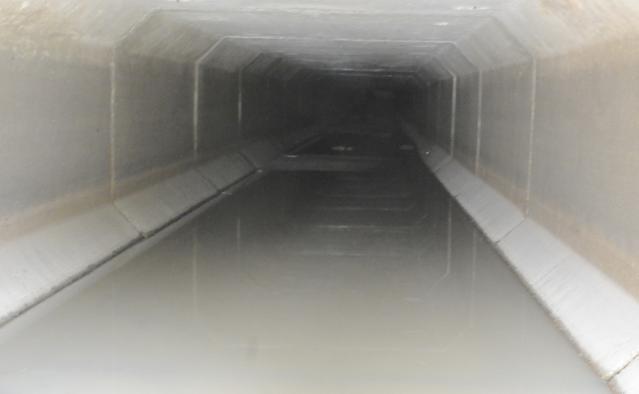
April 1 Inside the right side of the double drain
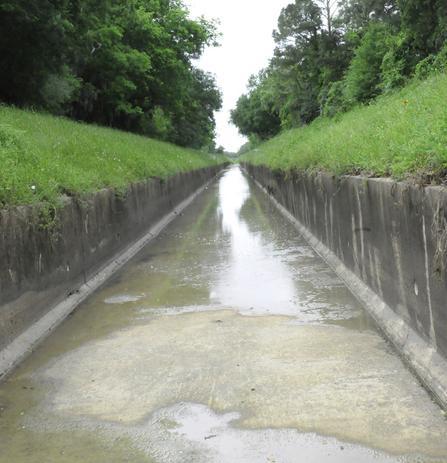
It was time for Precinct 3 to tackle the daunting clogged drains that have impeded water drainage for decades.
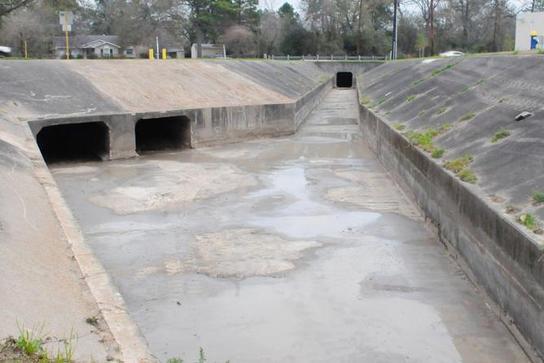
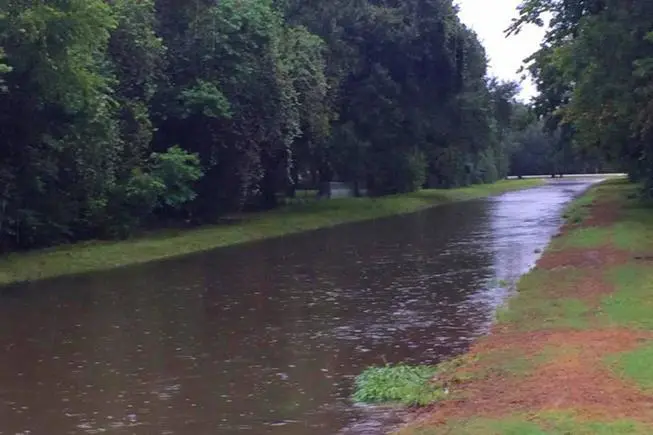
This image was taken August 26, 2017 during Hurricane Harvey.
This is channel E133 just outside of it's banks.
Special thanks to the following people:
U.S. Congressman John Culberson, Mary Schneider, and all the men that worked in the channel and the drains.